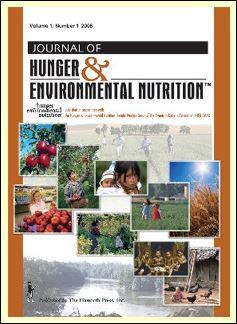 We sat down recently with dietitian, school breakfast supporter, and longtime friend of SNF, Elizabeth Campbell, RD, to discuss her work on a series of recent articles that appeared in the September 2013 issue of the Journal of Hunger and Environmental Nutrition. The four papers discuss the findings and implications of research done by Campbell and her colleagues at the University of California at Berkeley, with support from the Robert Wood Johnson Foundation. Liz currently works as a consultant, and previously worked with School Nutrition Foundation as senior project manager. This is part one of a two-part blog series.
We sat down recently with dietitian, school breakfast supporter, and longtime friend of SNF, Elizabeth Campbell, RD, to discuss her work on a series of recent articles that appeared in the September 2013 issue of the Journal of Hunger and Environmental Nutrition. The four papers discuss the findings and implications of research done by Campbell and her colleagues at the University of California at Berkeley, with support from the Robert Wood Johnson Foundation. Liz currently works as a consultant, and previously worked with School Nutrition Foundation as senior project manager. This is part one of a two-part blog series.
School Nutrition Foundation: Elizabeth, thanks for sitting down to talk to us today. Let’s start at the beginning—In your article, you surveyed over 200 U.S. Feeding America food banks about organizational views, policies, and practices relating to nutrition. Give us an overview of the study, and what prompted your interest in the research.
Elizabeth Campbell: My first job as a dietitian was as the nutrition resource manager at Food Bank of Central New York. One of my responsibilities was to educate food pantry directors and clients about healthy eating. It was difficult to encourage food pantries to distribute—and to get clients to eat—whole grains, lean meats, and fresh fruits and vegetables if that was not the type of food that they had access to previously. It also seemed odd to discourage sugar-sweetened beverages and snack food consumption while we used our limited resources to store and distribute these types of food—food that low-income clients had plenty of access to. This caused us to take a good look at the food we distributed and sourced. The first step in trying to intentionally provide foods that more closely aligned with the diet promoted through the dietary guidelines was to decline donations of soda and candy. This most recent study is a continuation of my earlier experiences.
At Food Bank of Central New York, we found that developing a donated nutrition policy helped to create a culture that supported practices that more closely focused on client health. This current RWJ-funded study was intended to provide some insight on the culture, capacity, and practices around nutrition at the national food bank level. This information can and will be used to develop strategies to strengthen the emergency food network’s commitment to nutrition and health for food insecure clients.
SNF: Tell our readers about your paper in the context of the four that were published in the Journal of Hunger and Environmental Nutrition; how can a better understanding of current practices and views in food banking help inform hunger solutions? Further, how can we implement policies going forward that enhance wellness through distribution of foods that are more healthful?
EC: I think, as in any topic, it is important to gather as much information about a current situation before developing and advocating for wide-spread adoption of policies, or strategies to make improvements. In this case, we wanted to better understand what food banks are currently doing to promote nutrition, their commitment to nutrition, and barriers or challenges that they face as they try to distribute the healthiest foods they can to low-income clients. The development of policies to improve the quality of foods distributed through the emergency food network is only the first step in a process to make large organizational shifts in food banking. Food banks still need to provide enough food to a growing population of clients who are still feeling effects of the recession and most recently may have seen cuts to their SNAP benefits.
SNF: It can be hard for people to understand how food insecurity and/or hunger can co-exist with rising rates of obesity. Can you briefly address this apparent dichotomy, and talk about how helping food banks distribute healthier foods can help address and resolve both issues?
EC: The relationship between food insecurity and obesity is complicated. However, the dietary patterns that lead to obesity are pretty well understood. Diets that largely consist of foods that are calorically dense and nutritionally void—such as sugar-sweetened beverages and grain-based desserts—are obesegenic. These foods are often cheap and widely available in low-income neighborhoods. It makes sense that families with limited funds consume these foods and therefore experience obesity at the same rate as those with higher incomes and in some cases, like women, at a higher rate.
Part two of our interview with Elizabeth Campbell will be published on Monday, December 16.

Pingback: UC Berkeley Center for Weight and Health Releas...
Pingback: UC Berkeley Center for Weight and Health Release Food Bank ... - Fresh Green World | Fresh Green World
Pingback: UC Berkeley Center for Weight and Health Release Food Bank Nutrition Report, Part Two